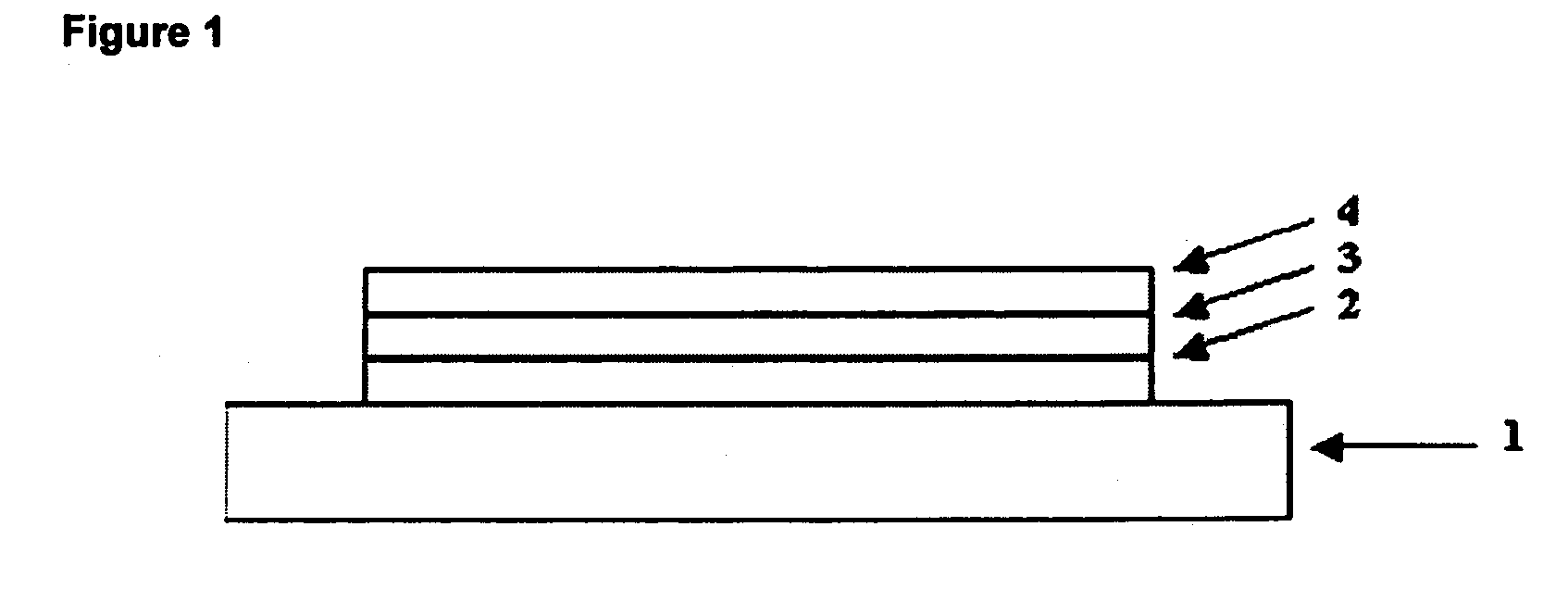Electroluminescent Device
a technology of electroluminescent device and electroluminescent layer, which is applied in the direction of luminescent composition, chemistry apparatus and processes, other domestic objects, etc., can solve the problems of complex formation of multiple polymer layers, poor performance, and conjugation between repeat units, so as to reduce or prevent the modulation of the first repeat unit's energy level, reduce or prevent the effect of triplet energy level and high triplet energy level
- Summary
- Abstract
- Description
- Claims
- Application Information
AI Technical Summary
Benefits of technology
Problems solved by technology
Method used
Image
Examples
examples
[0096]General Procedure
[0097]A green emitting complex 11 or red-emitting complex 12 (as disclosed in WO 02 / 66552) and a host polymer were deposited by spin coating from xylene solution onto a glass substrate comprising a layer of indium tin oxide, which may optionally be provided with a layer of hole injection material such as PEDT / PSS, or a hole transporting material. An electron transporting / hole blocking layer may optionally also be provided between the electroluminescent layer and the cathode. A bilayer cathode of calcium / aluminium was deposited over the electroluminescent layer and the device was encapsulated using an airtight metal enclosure available from Saes Getters SpA.
[0098]2,3,7,8,12,13,17,18-octaethyl-21H,23H-porphyrin platinum(II) may be used as an alternative to red emitting complex 12.
[0099]A bilayer cathod of lithium fluoride / aluminium may be used as an alternative to calcium / aluminium.
[0100]Devices were prepared using the following hosts:
[0101]Hosts A-E were used a...
PUM
| Property | Measurement | Unit |
|---|---|---|
| quantum efficiency | aaaaa | aaaaa |
| quantum efficiency | aaaaa | aaaaa |
| electroluminescent | aaaaa | aaaaa |
Abstract
Description
Claims
Application Information
 Login to View More
Login to View More - R&D
- Intellectual Property
- Life Sciences
- Materials
- Tech Scout
- Unparalleled Data Quality
- Higher Quality Content
- 60% Fewer Hallucinations
Browse by: Latest US Patents, China's latest patents, Technical Efficacy Thesaurus, Application Domain, Technology Topic, Popular Technical Reports.
© 2025 PatSnap. All rights reserved.Legal|Privacy policy|Modern Slavery Act Transparency Statement|Sitemap|About US| Contact US: help@patsnap.com



